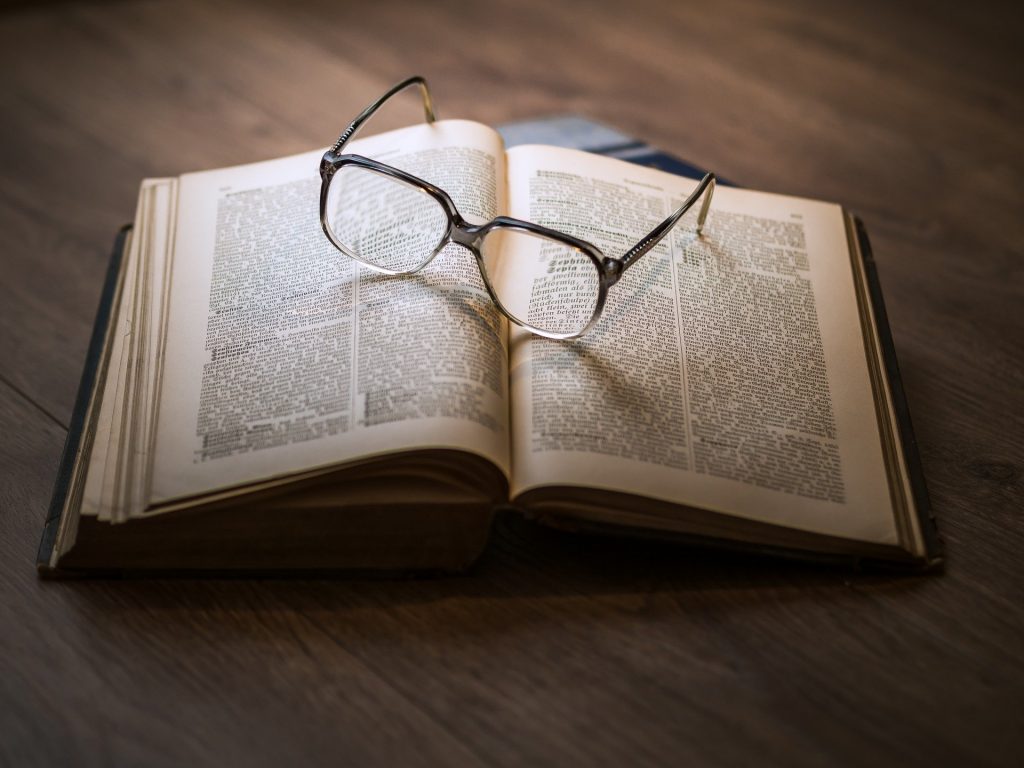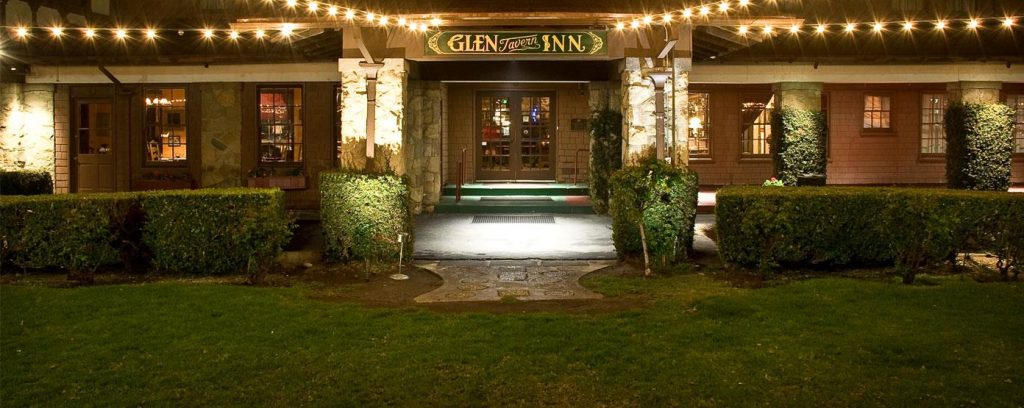How Does the Living Realm and Our Natural Environment Cause and/or Contribute to Paranormal Activity?
Approaching paranormal research is the same as approaching a noncomplete puzzle. You have pieces scattered about and it takes careful thought and determination to find the matching pieces and put them together. Even though some connect, the puzzle isn’t completely finished until all portions fit together to create one unified product. With paranormal research, you are testing theories and applying unique experimentation that may or may not help to explain the cause(s) of anomalous phenomena. It’s important to use creative and constructive thinking during this process; perhaps, consider other rationales to explain the answers we’re seeking.
Suggestibility and Bias
In my professional opinion, one area that is often overlooked in the paranormal investigation and research arena is how the living realm causes and/or influences anomalous phenomena. Let’s face it: we can’t know about supernatural occurrences without mortality attempting to explain and define it. This begs me to ambivalently ask this question: is a paranormal case study ever without bias and power of suggestion? In other words, many notable haunted locations have been talked about, explored and investigated over time by many people from all walks of life. Each person that has witnessed ghostly activity, conducted a case study or casually observed something otherworldly at a specific site has already contributed to bias. Just think about the various data, personal encounters and eye-witness testimony that’s been documented at supernatural-infested locales via mainstream media, books, articles, lectures, etc., for the casual observer or seasoned researcher to access. I am not even going to discuss the entertainment industry’s contribution to affecting one’s belief about the paranormal.
However, I will mention how it’s recently suggesting that spiritual beings are entities to be feared through the various shows and movies about demons and malevolent creatures. Due to this spread into the conscious and subconscious, more and more paranormal groups are receiving e-mails and calls from home owners and/or renters complaining of a demon in their home. This just goes to show how easily a human being is swayed into believing one thing or another. What’s interesting is how a person may truly believe that his or her encounters and description of occurrences are real, even when they’re proven otherwise. Sometimes, people are so cemented in their beliefs that they will refute any evidence to the contrary.
What often happens is that people train their minds to formulate a consensus of what’s going on that is solely based on someone else’s work and research. Now, some of this research may be accurate and something that is worthy of knowing; however, much of it can be polluted, false information originated by various human filters – religious predisposition, belief or lack thereof, personal baggage or psychological states of mind, to name a few. Even certain personality traits could predispose certain individuals to attributing a noise at night to a ghost or spirit. California’s Chapman University even released a survey that found that those who are generally scared are more likely to believe in the supernatural. I am not suggesting that we ignore others’ opinions, findings or beliefs. I highly advise that individuals apply their own analysis and scrutiny and then see if it matches what others have discovered.
If you rely on what others say or document in regards to paranormal phenomena, you may not always get genuine evidence.
It’s important for people to conduct their case studies critically and conscientiously, while keeping others’ findings close at hand, should they need to refer to them. It’s good to have a variety of data – whether proven genuine or not – on hand; as in the end, it can be helpful in regards to attempting to put the pieces of the unknown puzzle together. But, solely relying on what others’ say can skew what is actually going on, especially if it’s not accurate.
Let me give a couple examples: a group of individuals walk into a supposed haunted building with uncurbed excitement and gadgets ready to be utilized. After some time exploring the premises, one person reports feeling a foreboding presence. Soon after, this feeling extends to everyone involved. Maybe this is power of suggestion (most likely is) or truly a powerful entity making itself known to all the explorers in the group. In the field of paranormal research, it is typically recommended to notate subjective material only to be disclosed after the investigation is completed to corroborate intuitive impressions and/or personal encounters.
How do you explain the numbers of paranormal incidents skyrocketing around Halloween? Of course, some of it can be explained by the thinning veil between our world and the next. Many people do experience heightened psychological states during this time, which affects how they perceive and react to certain anomalous phenomena. When your senses are overloaded by ghostly stimuli as presented during September and October, it’s only natural that a person will become hyper-focused on it. The mind is a mysterious vessel as it constantly tries to make logical sense out of its environment.
There are numerous YouTube videos about a certain residence in the United States that has been claimed to be haunted after a murder. In these videos, people have examined police body cam footage and document having heard certain EVPs or electronic voice phenomena. Some also report seeing apparitions and shadows in the home. Whether this is true or not, those that have no prior knowledge of the case will be subjected into believing these alleged paranormal claims by watching these videos. So, they are trained to look for just those anomalies, potentially missing authentic types that may showcase. Those that are gullible and believe everything they see and hear without in-depth analysis and critical thinking will be further duped by allowing these videos to enter their conscious. This creates a snowball effect where more and more videos are produced that spread erroneous information. When this happens, a false haunting takes place or one that is psychokinetically engineered by the human mind.
Psychokinesis
Let’s take a moment to examine psychokinesis (PK) more closely. In the movies, those noisy cabinets that seemingly move by themselves are said to be caused by a curious ghost. While this may be the case with certain situations, PK energy doesn’t have anything to do with the deceased at all as it originates from living human beings. In 1914, author Henry Holt in his book, On the Cosmic Relations, first discussed psychokinesis in more depth. He explained that psychokinetic situations occur when an individual’s psychic aptitudes are able to influence the movement of a physical object without any physical assistance. Over the years and after studies into this perceived psychic ability, there remains a lot of controversy regarding its scientific veracity as it is said to violate some laws of physics, be the result of a person’s professed ability to cause such events or entirely simulated using magic skills.
Psychokinesis and projected thought forms go hand-in-hand in my opinion. Since we’re made of energized cells, it makes sense that our thoughts are, too. A mere thought can take on its own life form if enough power and intention are focused on it. If you critically think about it, this could be one of the contributors of why there’s an influx of the living and spirit world interacting with one another. It can also be the cause of why there are so many reported hauntings and inflows of supernatural activity. Across the globe, are all the documented paranormal happenings truly genuine paranormal occurrences or are some of them created by the human mind, whether it’s via psychokinesis, tulpas or living thoughts, or through pure imagination?
Day and night, there are paranormal case studies occurring across the planet. I am not doubting that this is consistently waking up the afterlife and providing the impetus for it to interact with those in the physical world. It’s synonymous to a revolving door at a department store; as it keeps moving and operating in a circular fashion, so do the living and departed as they come in and out of each other’s existence. However, it’s important to sift through potential false hauntings and imagined supernatural phenomena and understand how they are created.
Let’s look at some other factors that could cause false positive hauntings and invented paranormal phenomena. What percentage of reported anomalous activity from around the world is linked to one or more of the following? This would indeed, be a very intriguing and mind-opening study; one that showcases that not all reports of paranormal occurrences are truly, paranormal.
Infrasound
In 1980, engineer Vic Tandy claimed that Infrasound could be the cause of observed paranormal phenomena. It specifically refers to low-frequency sounds vibrating from 0.1 to 20 Hz, just under the level of human hearing. Infrasound is utilized in monitoring seismic activity and for locating artillery in World War II, for example. Tandy discussed in his paper “Ghost in the Machine,” that he worked in a laboratory noted for its spooky vibes. He also discovered that the low-frequency vibrations further caused dizziness, fear and blurred vision. Individuals reported feeling anxious and on edge there; however, these apprehensive feelings subsided when a fan putting out noise at a frequency of 19 Hz was shut off. Tandy conducted experiments at several haunted locales.
Sleep Paralysis | Hypnagogia | Hypnopompia
Authentic visitation from the astral plane should not be confused with sleep paralysis, which is more or less a physical phenomenon. Simply put, sleep paralysis is a feeling of being awake but unable to move your body. It usually occurs during one of two states: the hypnagogic or when you are falling asleep (predormital sleep paralysis) phase or the hypnopompic state or when you are waking up (postdormital sleep paralysis). The dreamer is typically not aware that he or she is dreaming but instead thinks he or she is awake in the bed. During this time, you may be unable to move your body for several seconds or even up to a minute. Other symptoms may include a sense of pressure, a feeling of choking and/or seeing a presence standing over you. You may not be able to speak; however, you are fully aware of what’s happening. During an episode, a person may also experience the sensation of falling, floating, flying or leaving their body (out of body experience or OBE).
Sleep paralysis will usually end on its own terms, when someone touches you or you make a conscious effort to move. It may accompany other sleep disorders, such as narcolepsy, disturbed night sleep, slumbering during the day, etc. Sleep paralysis may also be caused by certain medications, substance abuse, medical condition(s) and/or mental health disorders, such as bipolar disorder or schizophrenia. Sleep deprivation or times of intense physical and emotional stress may trigger an episode.
Many sleep researchers believe that this condition may be a sign that someone is not adequately moving through the stages of sleep. It is rarely connected to a psychological problem or mental illness. For hundreds of years, people have described sleep paralysis as experiencing some evil force or entity; in fact, almost every culture has reported this phenomenon and the belief that someone is being attacked by some shadowy, malevolent specter. Although it may seem that a supernatural force is attacking you during this stage of sleep, a paranormal origin is quite unlikely. Reality and fantasy mesh together during an episode with lucid dreaming potentially intensifying. Some people will mistake sleep paralysis for alien abductions as its identifying symptoms often mimic abductee reports. It often affects people in their 20s or 30s.
It is recommended to get at least six hours of sleep, but preferably eight to ten. If you have recurrent episodes, talk to your physician as he or she may refer you to a sleep study specialist. Sleep is a fundamental human need; without it, we would not be able to effectively function. When we slumber, we cycle through phases of NON-REM and REM (rapid eye movement). The REM phase happens around 90 minutes after you fall asleep. The first phase may last around ten minutes with each additional one lasting longer with the final episode lasting 60 minutes. Heart rate, breathing and brain activity are more active in this state. During REM, we are dreaming as our eyes move about in different directions. NON-REM comes first followed by a shorter duration of REM; then the cycle repeats itself. Our body’s organ systems repair and rejuvenate during deeper levels of NON-REM.
Is it possible to have a true paranormal encounter or visitation from the other side during sleep paralysis? It’s feasible and certainly should not be ruled out. This is especially the case with the aforementioned predormital and postdormital states of sleep mainly because our inhibitions are lowered while in these phases.
Carbon Monoxide Poisoning
Yes, even the slightest carbon monoxide leak can cause people to have symptoms that mimic paranormal encounters. Various symptoms can be caused from a CO leak, which include hallucinations, sleep paralysis episodes, apparition sightings, feelings of unease or weakness, headaches and nervousness. There have been many instances of resolved CO leaks, which resulted in a cessation of all perceived paranormal activity and physical symptoms.
Electromagnetic Field and Electromagnetic “Fear Cages”
One can’t talk about paranormal research without discussing the effects of EMF or the electromagnetic field. An EM field is caused by increasing electric charges, which proliferate at the speed of light. The EM field basically exists everywhere. Electronic devices emit readings, some of which are very high, which can affect those who are sensitive to EMF. In fact, EMF sensitivity can produce a variety of symptoms, ranging from flu-like feelings, headaches, anxiety, hallucinations, nausea, fear, heart palpitations and the sense that you’re being watched by an unseen presence. A “Fear Cage” is an area of highly concentrated EMF, which can cause perceived supernatural occurrences for those who stand in its path. So, when sifting through all the objective and subjective data from a paranormal case study, it’s warranted to examine EMF and its effects on humans.
Certain Psychological Disorders
It’s commonsense that certain psychological disorders can either affect how a person perceives and reacts to ghostly activity or cause someone to exhibit symptoms that mimic actual paranormal occurrences. Various psychiatric medications as well as others (including illegal substances) can cause a person to experience a false paranormal encounter. Schizophrenia can produce delusions or false beliefs that are not based in reality or hallucinations, which cause a person to see or hear things that don’t actually exist. In the beginning phase of Schizophrenia, symptoms of it can easily go unnoticed by friends and family. Post-Traumatic Stress Disorder (a psychiatric injury) and trauma can be linked with perceived paranormal activity. It can cause hypervigilance or being overly alerted to one’s environment, which may contribute to imagined visual, auditory or tactile encounters. Epilepsy and certain seizure disorders can cause situations that mimic supernatural activity and the list goes on.
In my opinion, continuing scientific studies are needed to understand the brain functions during a supposed or genuine paranormal incident. For example, let’s say that there are numerous reports of similar activity at a location from different people. But, then a few reports of activity come in from people that don’t match what the majority of others have documented. Maybe these are accurate and maybe they are not. It may be beneficial to further explore these individuals to see if they are dealing with any psychological disorder, medication use, sensitivity to EMF, etc. Perhaps in doing so, it can unearth a discovery that can potentially explain how and why these few people reported phenomena that strongly differed from the norm.
Closing Thoughts
In my opinion, there needs to be a standard, universal protocol for all paranormal researchers to follow. Conducting a case study should involve careful scrutiny of not just the reported / witnessed anomalous phenomena at a location but also the living human beings who step foot on its premises. This will unearth a whole new set of observations, opinions, and questions that can lead to further unlocking the secrets to supernatural phenomena. Hopefully, this will enable investigators to better distinguish between real activity versus that which is created by the erroneous or the imagined.
Reference: Strickland, Nicole. The Afterlife Chronicles: Exploring the Connection between Life, Death and Beyond. Atglen, PA: Schiffer Publishing, 2021.



